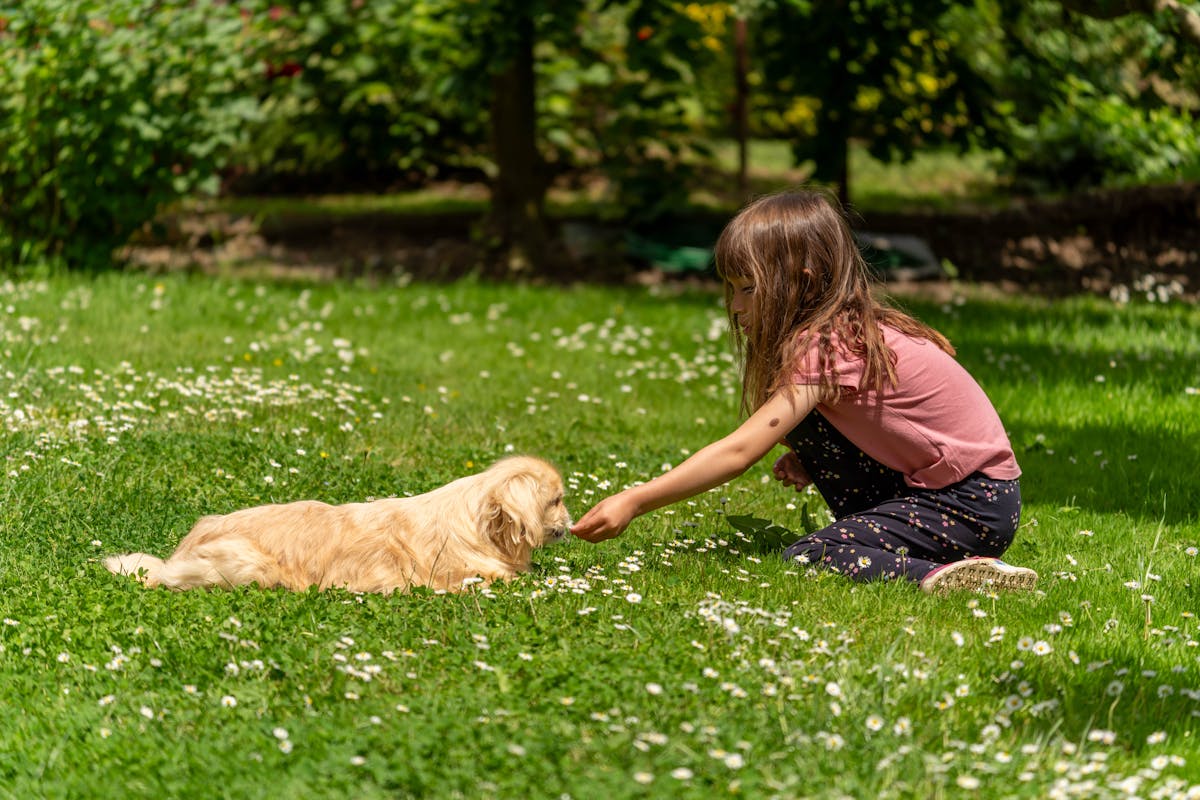Dogs are known for their friendliness and playful nature, making them wonderful companions for families. However, children may not always understand how to safely approach or interact with dogs, especially those that are unfamiliar.
While many dogs are gentle, even the calmest animals can react unpredictably if they feel threatened or overwhelmed. Ensuring children know how to approach and engage with dogs safely is essential for both their own safety and that of the dog.
Table of Contents
ToggleThe Importance of Supervision in Safe Dog Interactions
Supervising children around dogs, especially those they don’t know, is crucial in preventing potential incidents and teaching kids safe interaction habits.
By guiding children on how to engage appropriately, adults can foster positive interactions that allow children to enjoy the company of dogs without putting themselves or the dog at risk. With careful supervision, children can learn to appreciate and respect these loyal animals.
Understanding Canine Behavior and Boundaries
Recognizing a dog’s comfort level is essential for safe interactions, especially for young children who may not yet recognize signs of discomfort.
Dogs often communicate through body language, which children can learn to read with proper guidance. Adults play a key role in this learning process by monitoring interactions and stepping in when necessary.
Protecting young children from potential bites or scratches also helps them learn respectful animal interaction skills they’ll carry into adulthood.
Recognizing Signs of Discomfort in Dogs
Dogs communicate discomfort through various body language cues, such as lowering their ears, tucking their tail, or growling. Teaching children to recognize these signals helps them understand when a dog needs space.
For instance, if a dog backs away, looks away, or displays signs like lip licking or yawning, it’s a clear message that the dog may be uncomfortable.
Recognizing these cues allows children to respond appropriately, avoiding actions that might make a dog feel threatened. Adults should always step in if they observe a dog displaying signs of stress or discomfort around a child.
By supervising interactions, parents or guardians can redirect a child’s behavior toward gentler, safer ways of engaging with dogs, creating a harmonious environment where both the child and dog feel secure.
Teaching Children How to Properly Approach Dogs
It’s essential to show children how to approach dogs respectfully. Encourage them to ask a dog’s owner for permission before petting and to approach slowly, letting the dog sniff their hand before initiating any contact. Quick movements or loud noises can startle dogs, so a calm, gentle approach helps set a positive tone.
Children should also learn to avoid touching sensitive areas, such as a dog’s face, ears, or tail, as these spots may trigger a defensive reaction.
By supervising these interactions, adults can ensure that children learn to approach dogs in a safe, controlled manner, promoting a pleasant experience for both the child and the dog.
Establishing Boundaries for Safe Interaction
Teaching children about personal space is key to helping them understand that dogs, like people, need room to feel secure. Encourage children to respect a dog’s space, particularly when it’s eating, sleeping, or playing with a favorite toy.
Dogs may be more protective during these moments, so establishing boundaries reduces the chance of accidental bites or scratches.
Supervision allows adults to reinforce these boundaries and step in if a child gets too close during sensitive times. By setting these guidelines, children can learn to respect a dog’s needs and comfort levels, ensuring safer and more enjoyable interactions.
Modeling Respectful Behavior Around Dogs
Children often emulate the actions of adults, making it important for parents to model respectful behavior around dogs.
Adults can demonstrate kindness and patience by approaching dogs calmly, speaking softly, and avoiding sudden movements. This teaches children how to treat animals with compassion and understanding.
When adults show respect for a dog’s comfort and boundaries, children are more likely to follow suit, internalizing these behaviors and applying them in their own interactions. Modeling respectful behavior sets a foundation for lifelong responsible animal interactions.
Educating Kids on the Difference Between Play and Aggression
Children may struggle to distinguish between playful and aggressive behavior in dogs. Teaching them the difference between a wagging tail and warning signs like growling or raised hackles is crucial for safe interaction.
Explain to kids that while some dogs may play by chasing or barking, other actions indicate the dog may be uncomfortable or defensive.
With clear guidance, children can better understand when it’s safe to engage with a dog and when it’s best to give the dog space.
Supervision helps reinforce these lessons, as adults can provide immediate feedback and help children read canine behavior more accurately.
Ensuring Adult Supervision at All Times
Direct adult supervision is essential whenever children interact with unfamiliar dogs, providing an immediate safety net in case the dog becomes uncomfortable or the child behaves unexpectedly.
Even the calmest, well-behaved dogs can react defensively if startled. Having an adult present allows for quick de-escalation of any potential issues.
Adults can also step in to calm a dog or redirect a child’s actions if necessary. In the event of an injury, consulting with legal experts, such as Miller & Steele Personal Injury Lawyers, can help families understand their rights.
Consistent supervision ensures that interactions are safe, and children learn to approach dogs with caution and respect.
Encouraging Positive Reinforcement and Patience
Positive reinforcement is an effective way to help children learn appropriate behavior around dogs. Praising children for calm, gentle actions—like waiting patiently for the dog to approach or petting with care—reinforces respectful interactions.
Patience is key to building a trusting relationship with dogs, and children should learn that interactions should never be forced.
When children receive positive feedback for safe behavior, they are more likely to remember and repeat these actions in the future.
Adults play a central role in fostering this learning environment, reinforcing respectful interaction with patience and positive reinforcement.
Knowing When to Avoid Interaction Altogether
In some cases, the safest choice is to avoid interaction with an unfamiliar dog altogether. Dogs can be in stressful situations or have a history that makes them less predictable around children. Teaching kids to recognize when a dog may not be open to interaction is an essential aspect of their safety training.
If there is any uncertainty about the dog’s temperament or current mood, observing from a distance is the wisest approach.
Adults can guide children in understanding that not all dogs are approachable, helping them learn to respect an animal’s space and respond responsibly.
Conclusion
Teaching children safe dog interactions is an important skill that fosters positive experiences and a deeper appreciation for animals.
By understanding a dog’s body language, respecting boundaries, and practicing patience, children learn how to engage with dogs in ways that are both respectful and enjoyable.
Through supervision, modeling, and clear guidance, adults can ensure that kids grow up with the knowledge and skills to be responsible, compassionate animal lovers.
Keyword: Teaching children dog safety






